One of the China’s foremost philosophers and political reformers, Confucius (ขงจือ/Kong Jeu in Thai) is a globally known icon of wisdom. Although there is scant evidence confirming any specific details, Confucius’ traditional life legend has a distinct lack of drama, success, and supernatural, which gives it far more credence than the magical background stories of most Chinese mortals who were later transformed into deities. Though there are, unsurprisingly, alternative Confucian folktales claiming that his mother was impregnated by a black dragon, that he was born with auspicious birthmarks, and other such things.
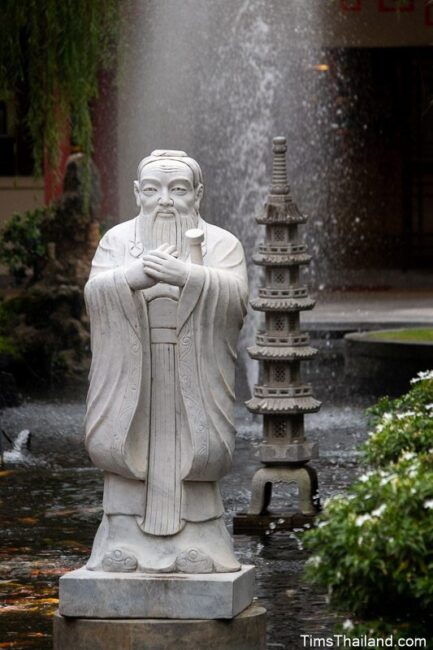
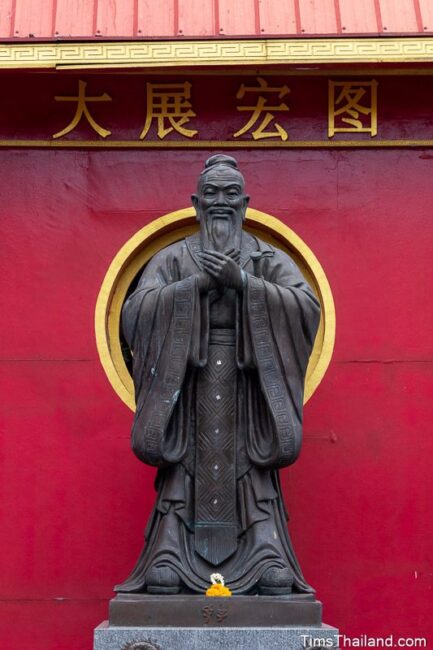
Born in 551 BCE as Kong Qiu in the city of Qufu (in what is now Shandong Province) Confucius was later called Kong Fu Zi, meaning “Master Kong.” Confucius is a Latinized version of this name created by Jesuit missionaries. His father was a minor noble who’s only son was disabled, so at age seventy he married again hoping for better luck with another son to carry on the family line. Confucius was three years old and his mother was eighteen when his father died and he grew up in poverty. But Confucius was a serious student and quick learner, mastering the classic six arts (ritual, music, archery, charioteering, calligraphy, and math) and also excelling in history, literature, and poetry. And with the help of his legacy social status, Confucius managed to find low-level government jobs, from stable hand to accountant. He married at age nineteen, four years before his mother died, and had a son and a daughter.
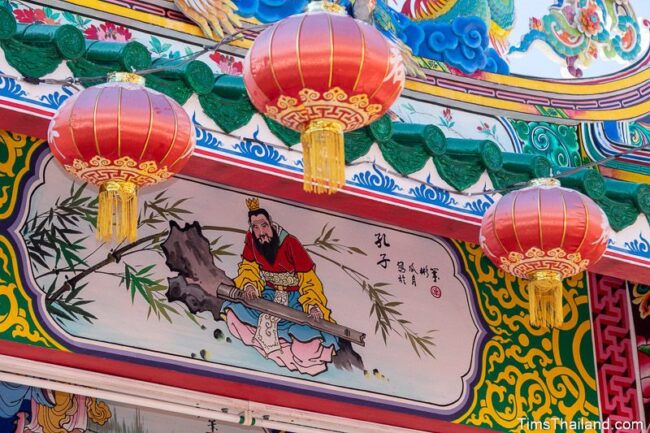
In his thirties Confucius became a renowned teacher, unusual in his willingness to accept students from all backgrounds, not just the sons of the elite. He taught not only the classic curriculum, but also his own theories on ethics and leadership. In essence, Confucius wanted an ordered, stable society where people submitted unreservedly to their leaders, parents, and elders. He promoted empathy, sincerity, nonviolence, moderation, the power of self-improvement, and caring for each other by following the golden rule: In his own words, “What one does not wish for oneself, one ought not to do to anyone else; what one recognizes as desirable for oneself, one ought to be willing to grant to others.”
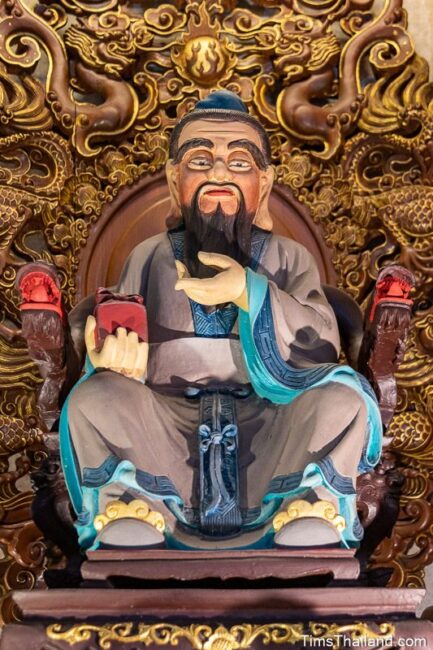
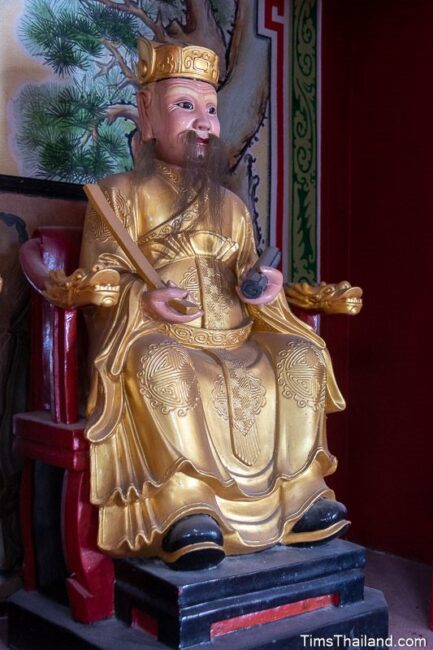
Having earned fame as a teacher, Confucius was brought into the civil service of the State of Lu in his late forties and rose to become Minister of Justice. It was a time of civil war between various powerful families in the region and he wanted to restore peace and prosperity by putting his ideas into practice, but there was only limited interest. At age fifty-six, realizing his king’s immorality could not be cured, Confucius left his homeland to find another king who would support his political goals. With a group of disciples, he wandered futilely through various kingdoms in eastern China for over a decade (an odd decision for a man who proclaimed to value family above all else), then at age sixty-seven he returned home to Qufu to live out his final years teaching and writing.
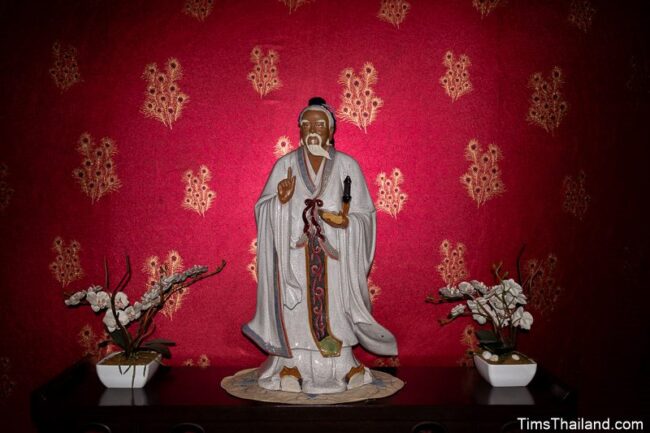
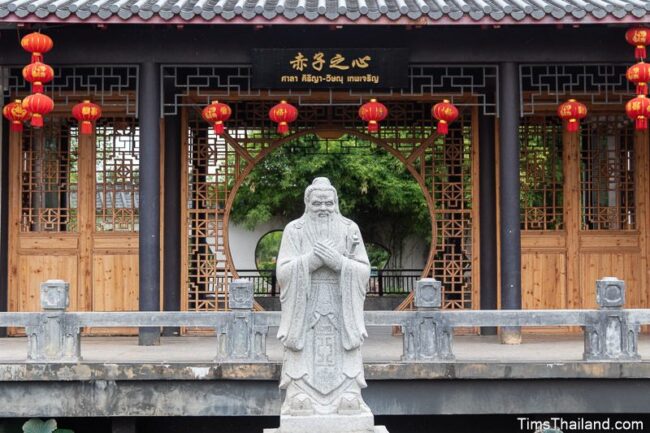
After Confucius died, in 479 BCE at the age seventy-two, his family built a temple in his honor, the first of many that would open in China and elsewhere in East Asia. (There are no Confucius temples in Thailand.) Soon after, Qufu became a place of pilgrimage and it remains so today, with the original temple now a huge complex (over 100,000 of Confucius’ descendants are buried in the cemetery) with UNESCO World Heritage status. His thousands of dedicated disciples, including his grandson Zisi, continued to spread “The School of the Learned” and by the early Han Dynasty (206 BCE–220 CE) Confucianism, albeit in a much-modified form, was the official teaching of the imperial court and Confucius himself had been made a god. Though it wasn’t his intent, Confucius is far from the only mortal to be deified by the popular will of the Chinese people. And even the non-religious idolize Confucius as an ideal person.
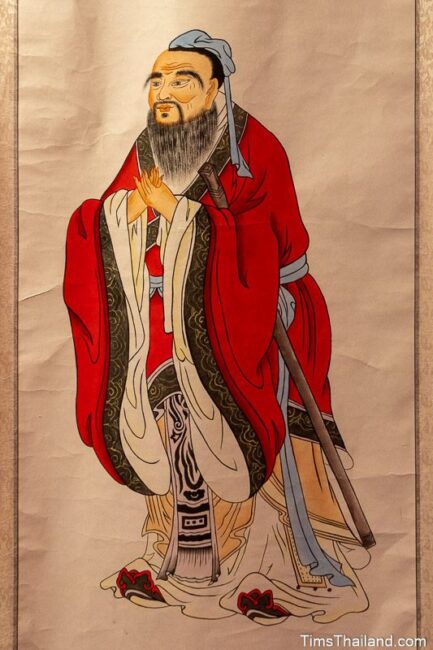
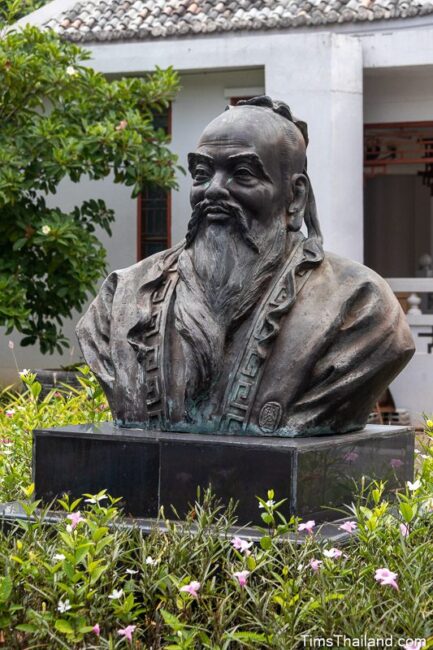
Confucianism continued to evolve over the next two millennia, becoming a formal state religion during the Tang Dynasty (618–907) and gaining elements of Buddhism and Taoism. But Confucianism never lost its focus on social harmony and moral behavior, and it remained at the core of Chinese civic and religious life until the 1960s when it became a casualty of the Chinese Communist Party’s Cultural Revolution; rejected because Confucius’ opposition to equality was seen as a barrier to development. But three decades later, once the economy had skyrocketed and party members became the superiors who were to be obediently respected, Confucianism pivoted back into favor. It helped, of course, that Confucius was fiercely pro authoritarian rule. In 2004 China inaugurated an international cultural program named the Confucius Institute.
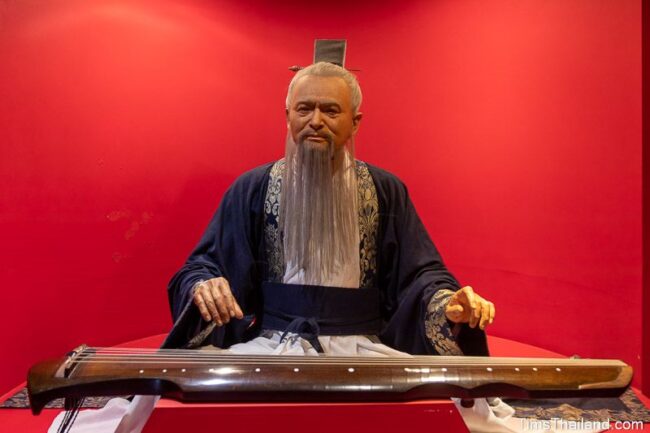
Though there is no single Chinese religion, the core foundation of most people’s faith is a blend of Taoism, Buddhism, and Confucianism – “three ways to one goal.” That said, a Confucian aspect is often absent from Chinese temples, and if there is one it’s much more likely to be a moral message in a painting from a folktale (Such as “Tan Zi Brings Deer Milk to his Ailing Parents” – รีดนมกวางรักษาบุพการี.) than a picture or statue of the man himself.
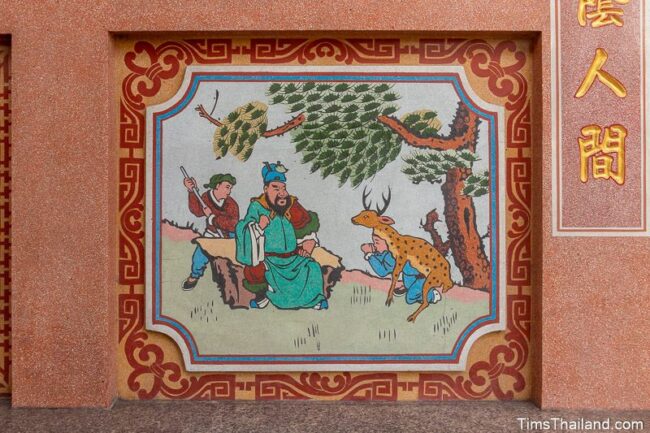
No portraits of Confucius from his lifetime exist, but in the standard depiction his beard is long and his hair is worn up in a bun, usually covered with a simple cloth hat though sometimes a tall, narrow headpiece is pinned over it instead. In sculpted form, Confucius usually has his hands together in front of his chest and is wearing a thick robe with enormous sleeves, though when he’s an object of worship, he sits in a throne like most other Chinese deity statues.
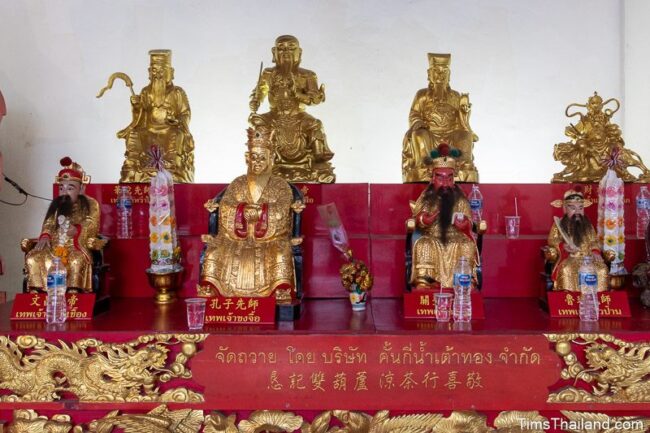
Confucius’s style implies wisdom, hence it’s sort of a generic look for poets, philosophers, and the like – including the poet Li Bai and physician Hua Tuo, who also sometimes appear in Thai-Chinese temples). And because even temple attendants usually don’t know about the temple’s art, usually the only way to identify him with any certainty is by a label, though these are rare; and the few you find are mostly in Chinese rather than Thai or English. The most common spelling of Confucius’ name in Chinese is 孔子 (note that this sort of resembles 717, as long as it’s not written with too much flourish. There are, however, three solid, though far from incontrovertible, clues that would lead you to guess with some confidence that a painting is of Confucius: he’s playing music on a guqin, he has bamboo-slip scrolls (used for writing since paper was invented long after Confucius died), or he’s holding a large quill pen.
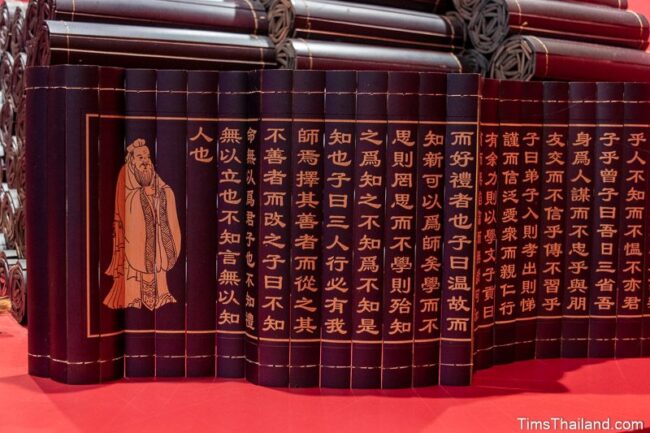
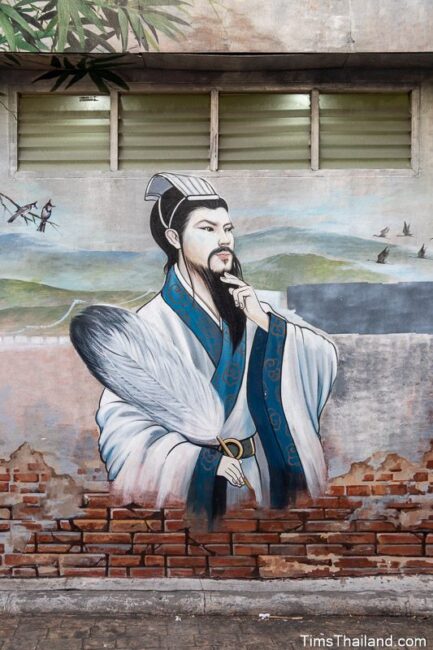
Not Confucius
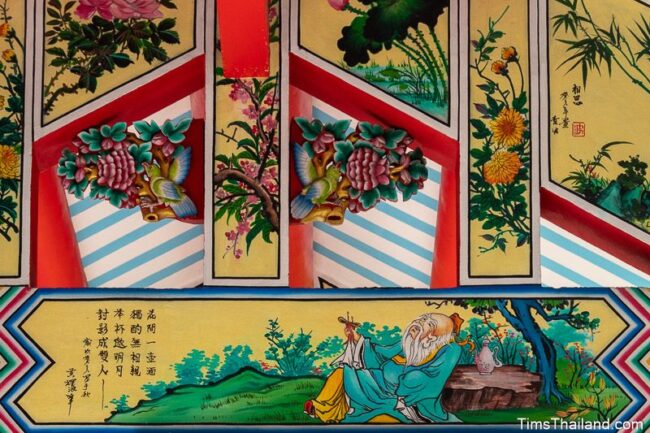
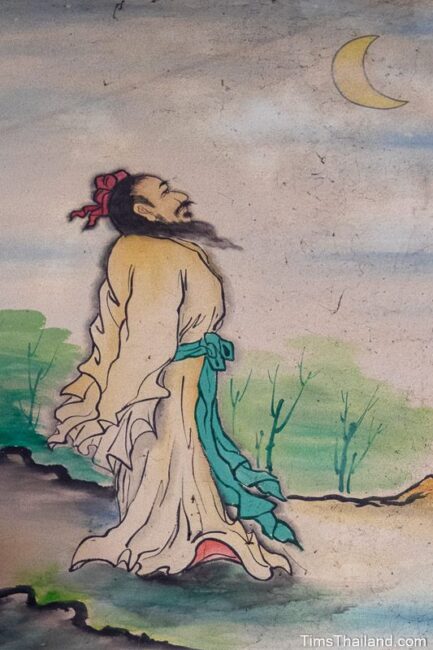
Probably Confucius
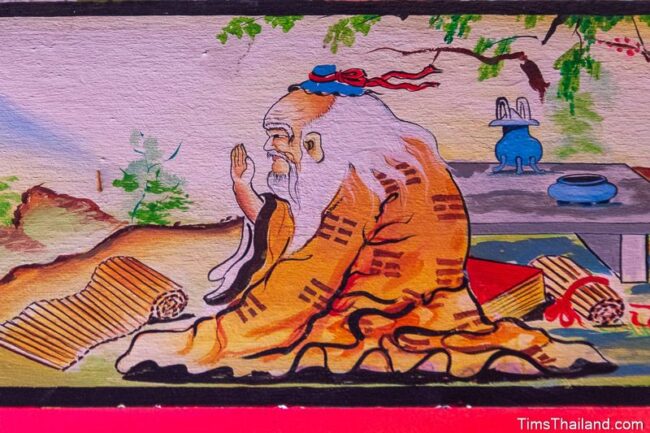
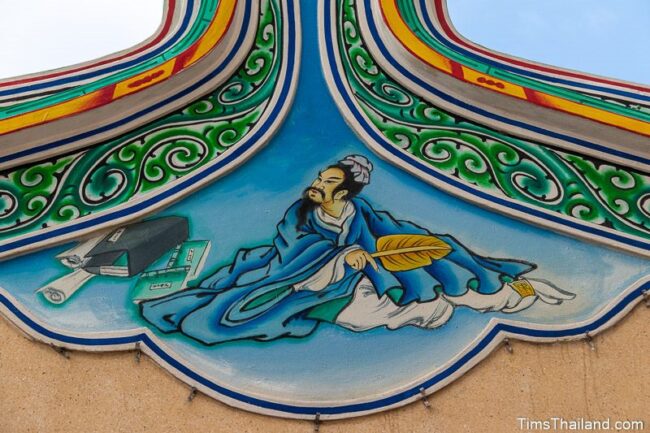
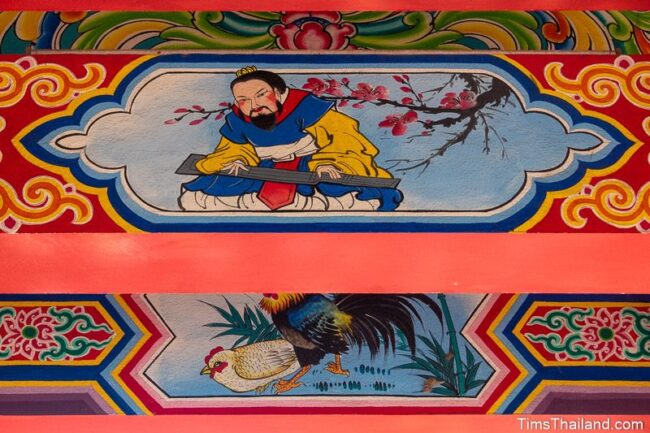
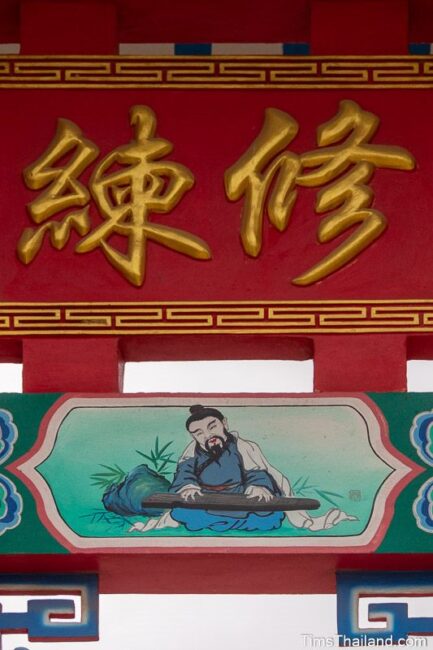
Thanks to Wang Yalan for answering my many questions about China.
All photos taken in Thailand.